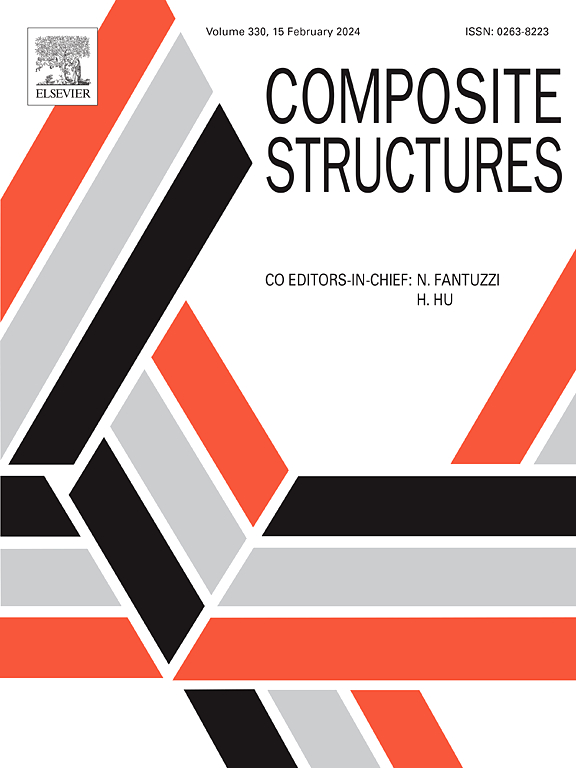Wave propagation-based characterization of 3D-printed soft auxetic structures
IF 6.3
2区 材料科学
Q1 MATERIALS SCIENCE, COMPOSITES
引用次数: 0
Abstract
Recent advances in soft mechanical metamaterials, which exhibit unique dynamic behaviors and anti-fragility, have led to the adoption of soft auxetic structures, one of several types of emerging functional structures, step-by-step into practical applications in the electronics, automotive, construction, and robotics fields. However, predicting the dynamic characteristics of soft auxetic structures remains a challenge, which in turn limits their applications due to a lack of comprehensive understanding of the structures. Here, through wave propagation-based theoretical modeling and experiments, a numerical method was presented to evaluate the dynamic properties of 3D soft auxetic structures composed of a viscoelastic polymer. 3D soft auxetic structures with three different unit cell sizes of re-entrant honeycomb were fabricated using a 3D printer. The theoretical procedure for predicting dynamic behaviors of the auxetic structures was presented and verified via comparison with wave propagation experiments. The frequency-dependent wavenumbers of the auxetic structures were derived by the Newton-Raphson method utilizing the predicted and measured transfer functions. The dynamic modulus and loss factor of the auxetic structures were then determined using the wavenumbers. This numerical approach is expected to provide a broader understanding of soft auxetic structures, which will lead to an expansion of the application fields.
求助全文
约1分钟内获得全文
求助全文
来源期刊

Composite Structures
工程技术-材料科学:复合
CiteScore
12.00
自引率
12.70%
发文量
1246
审稿时长
78 days
期刊介绍:
The past few decades have seen outstanding advances in the use of composite materials in structural applications. There can be little doubt that, within engineering circles, composites have revolutionised traditional design concepts and made possible an unparalleled range of new and exciting possibilities as viable materials for construction. Composite Structures, an International Journal, disseminates knowledge between users, manufacturers, designers and researchers involved in structures or structural components manufactured using composite materials.
The journal publishes papers which contribute to knowledge in the use of composite materials in engineering structures. Papers deal with design, research and development studies, experimental investigations, theoretical analysis and fabrication techniques relevant to the application of composites in load-bearing components for assemblies, ranging from individual components such as plates and shells to complete composite structures.
 求助内容:
求助内容: 应助结果提醒方式:
应助结果提醒方式:


